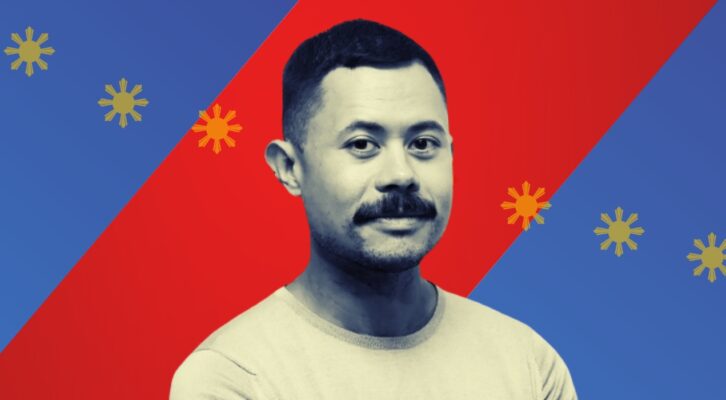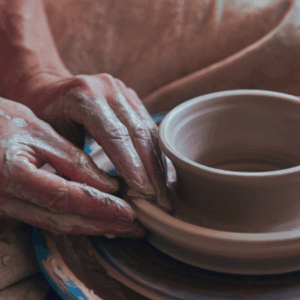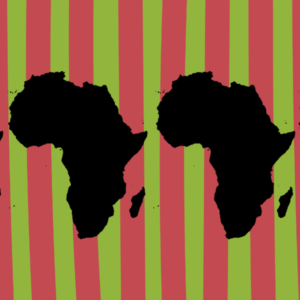
Food as First Language: Mike Curato on the Validation of Learning to Cook Filipino Food
The Author of “Gaysians” Rediscovers Memories of an Immigrant Childhood Through Special Dishes
My dad immigrated from the Philippines, but seldom cooked Filipino food when I was little. If he had to, he’d whip up some fried rice with chopped up hot dogs, but if we wanted real Filipino food, we had to travel to experience it. We needed to go to a Filipino enclave in New Jersey, usually to someone’s house or the back of a bodega that had a hot food buffet.
In the summer, we’d go to Filipino festivals in Passaic and Jersey City. I remember hopping out of the car and being led by the nose toward the wafting barbeque smoke. When we went to Filipino parties, I would stuff my face with lumpia and heap pancit bihon onto a paper plate resting on a woven bamboo charger.
At those parties, while I ate my weight in pinoy delicacies, I would listen to the boisterous conversations that swirled around me in a tongue I could recognize but not understand. My father never taught us his native Bisaya, a choice many immigrants make when raising their first-generation American children.
And I’ve always felt a bit disconnected from my Filipino heritage. Not having these language skills is a sore spot for me, especially as I’ve built my career around communicating with words. I would get laughed at because I couldn’t pronounce the dishes I was devouring, but I could clear a plate as well as anyone else there.
Back in 2020, during a very lonely lockdown, I was trying to promote Flamer, which features a Filipino main character. I wanted to get ahold of Lynda Barry, a Filipina-American legend in the comic industry, in the hopes of sending her a copy.
At those parties, while I ate my weight in pinoy delicacies, I would listen to the boisterous conversations that swirled around me in a tongue I could recognize but not understand.
I emailed my friend and fellow Filipino/author/illustrator, Isabel Roxas, asking her if she had any ideas about how to get in touch with Lynda, “just in case you know about some secret Filipino society that I wasn’t invited into.” She didn’t know Lynda, but she told me I should just “make some killer Adobo and see who drifts by.”
I jokingly replied that I wanted adobo right now, and in turn, Isabel sent me a recipe for Angela Dimayuga’s coconut chicken adobo from the New York Times.
“Adobo is very easy to make,” she wrote.
“Easy?” I thought.
My association with Filipino food was that it was something special, something difficult to procure, something we had to go on an adventure to find. It never occurred to me that I could just have it whenever I wanted it. I remember being so peeved when a Filipino restaurant opened in my hometown after I’d moved to the opposite side of the country. All those years of having to drive at least an hour for some decent ginisang pusit, and now it’s just around the corner from our house?
Once, for my sister’s first holy communion, I accompanied my father on a drive into urban New Jersey to pick up lechon (this is usually served for special occasions). We arrived at a house where a large man sat on a metal folding chair in his dingy garage with a pig on a spit over hot coals encircled by cement blocks. That is when you KNOW it’s going to be good.
All of this reinforced a sort of mysticism around the food of my people. Only these culinary shamans really knew how to make this stuff.
But it turned out, Isabel was right. I remember the garlic and peppercorns crackling at the start of the recipe. I felt a little giddy. I placed the chicken quarters skin-side down, making a sizzling clash like a chorus of cymbals as the fat rendered. I poured in a mixture of coconut milk, soy sauce, and vinegar, and gently slipped in the bay leaves. I walked away to let it simmer, and gradually the house filled with its miraculous aroma.
When it was finally cooked, and the mixture boiled down to a thick sauce, I plated my creation. Of course, there was rice to accompany it. (Yes, rice is one thing I do know how to cook properly like a good Asian boy. I may need to write a whole other article about how to measure the water using your index finger.)
When I took that first bite, I was overwhelmed with memories. As I bit into the tender meat and crunched the peppercorns, little fireworks went off inside me. First my tongue telegraphed my brain: “THIS IS GOOD THIS IS GOOD THIS IS GOOD.” Then my brain started shooting memories to my heart and tear ducts.
This is my childhood. This is my heritage. Just this simple act of cooking made me feel like I belonged. I was proud.
I started making the recipe somewhat regularly, and now I feel like an expert. (I even have my own variation: using rice vinegar for a little extra tang.) I have cooked it for multiple friends and family, and it’s always a crowd pleaser.
Learning to make adobo increased my confidence to cook other Filipino recipes. By summer of 2022, I was able to cook an entire Filipino feast for my friend Christine’s birthday, complete with pancit, barbeque skewers, lumpia, longanisa (okay, I bought those frozen), and of course, chicken adobo. It was quite exciting to place banana leaves on a table and lay all of the food atop a mountain of rice.
I watched Christine, who is herself a first-generation Filipina, eat the food I’d carefully prepared and exclaim “MMM!
“with her eyes closed and brow scrunched. For dessert I made halo halo, a sweet and refreshing shaved ice dessert with evaporated milk, jellies, fruits, and ice cream. This has become my new obsession, and I’ve experimented making my own hybrid variations.
I even bought a professional grade ice shaving machine. I’ve got street cred now.
Okay, I learned to cook chicken. So what? Well, I think that food doesn’t just fill your stomach, it fills the spirit. It’s a way to build community.
My new book, Gaysians, centers four friends who form their own chosen family, and explores the ways in which each struggle with being queer and Asian in America. I explore a lot of layers of identity: ethnic, cultural, sexual. The group of friends often talk about their hardships over meals of various Asian origins.
One of my favorite scenes in the book features two of the friends who feel like outsiders because they were not raised according to their cultural traditions (one is mixed, like me, and the other was adopted into a non-Asian family), but it’s the food that makes them feel connected.
As a half Filipino raised in America, someone who has only been to the Philippines a handful of times, a person who can only speak a few choice phrases in Bisaya or Tagalog, I find that being able to make a meal that might be considered “almost authentic” is really validating. You can’t speak with your mouth full, but two people can understand the shared experience of good food.
The act of sharing a meal is the act of forming kinship.
I can’t use my tongue to speak, but I can certainly use it to taste. I cook my culture, I can eat it, I can share it with others on a plate. The act of sharing a meal is the act of forming kinship.
And now, I don’t have to ask if I’m invited to the barbeque anymore. I can just throw my own.
______________________________

Gaysians by Mike Curato is available via Algonquin.
Mike Curato
Mike Curato is the author and illustrator the children’s book series Little Elliot. He has also illustrated What If… by Samantha Berger, All the Way to Havana by Margarita Engle, Worm Loves Worm by J.J. Austrian, The Power of One written by Trudy Ludwig, If I Were a Fish by Corook and Olivia Barton, and contributed to What’s Your Favorite Color? by Eric Carle and Friends, Sunny Day: A Celebration of the Sesame Street Theme Song, and Dear Heartbreak: YA Authors and Teens on the Dark Side of Love. Publishers Weekly named Mike a "Fall 2014 Flying Start." In the same year he won the Society of Illustrators Original Art Show Founder’s Award. Mike’s debut young adult graphic novel, Flamer, was awarded the 2020 Lambda Literary Award for LGBTQ Young Adult and the 2021 Massachusetts Book Award for Middle Grade/Young Adult. Gaysians is his adult debut.



















